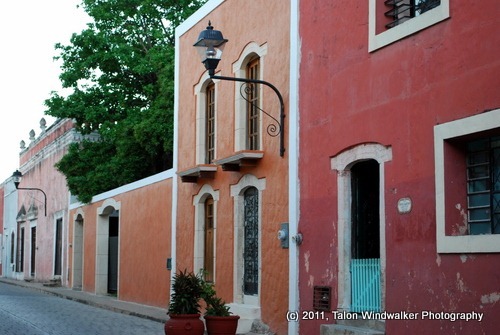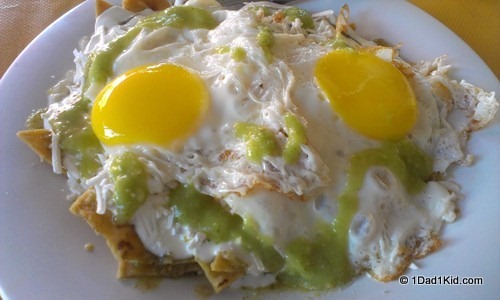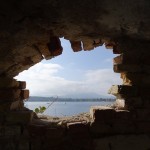Mexico is an incredibly diverse country. Each region has its own cuisine specialties, some differences in culture, topography, and more. The people are as colorful as their textiles. This nation attracts tourists from all over the world, so it’s usually easy to find great flight deals. Here are some tips and ideas for visiting this wonderful country.
Do I need a visa for Mexico?
The country is a very welcoming host, and most visitors will receive an entry for up to an impressive 180 days. If you’re from the US, you do not need an advance visa. Just come on down!
Regions
Mexico is a big country! The frontera (border) and northern region is quite arid and can see some very high temperatures during the summer.
The Baja Cailfornia area is a popular place for tourists. While there are a lot of spots to enjoy the ocean, it’s still very much a desert area. In fact, there are four main desert areas on the peninsula.
My favorite regions are the Yucatan (which separates the Gulf of Mexico from the Caribbean Sea and has several Mayan ruins), Chiapas (home to the fascinating Palenque ruins), and Oaxaca (pronounced like oh-a-haw-ka).
If you’re a scuba diver, I definitely recommend you head to the island of Cozumel. It has some incredible, world-class diving.
Safety
The media is usually rife with horror stories about Mexico. Mexico is actually a very safe place to visit. If you sell drugs or work for the DEA, then I wouldn’t recommend the northern regions. Otherwise, you’re fine. Almost all violence is between drug cartels and law enforcement. Tourists are usually left alone.
Getting around Mexico
Unlike Europe, you won’t find a lot of truly low-budget flights, and there is no countrywide train system. So if you’re touring the country, plan on taking the bus unless your budget can accommodate some flights. There are some decent airfares if you’re traveling between the right regions.
ADO (site is in Spanish) is my favorite bus company for doing longer hauls. They are generally quite comfortable, inexpensive, and safe. They can be over air-conditioned, so you may want something to wrap around your shoulders or legs.
Volaris often has some good deals for flying.
Taxis within the country are generally not metered, so it can be helpful to ask your hotel what the appropriate rates should be. Occasionally you will be charged a bit extra for a radio-dispatched taxi, so it’s usually cheaper to flag a taxi in motion.
When moving within a city or between nearby cities, make sure to ask about colectivos. These are shuttles that are quite cheap and handy to use. It can get pretty crowded in them, but you’ll save a lot of money by using them. Plus you get to experience more of the local culture this way. Mexico City has a good metro and public bus system.
Money
Prices can be a bit disconcerting at first because they use the dollar symbol to indicate pesos. So when you see a beer is $25 don’t have a heart attack. That’s actually 25 MXN which is less than $2 USD. Tour packages are usually listed in USD, though.
While you can use US dollars in most areas, I don’t recommend it. The exchange rate a restaurant will give you is much less than what a bank will. It’s best to just use your ATM card to withdraw pesos. (Safety tip: Don’t use stand-alone kiosks on the street. It’s always better to use an ATM that is attached to a bank. They’re easy to find and are plentiful.)
Language
Obviously, Spanish is the main language. Some of the indigenous people speak it as a second language. The accent changes a bit depending on what region the person is from, but the only one I find occasionally challenging is from the border area (as in bordering the US). However, it’s usually very easy to find people who speak at least some English, especially if you’re in larger towns or places with lots of tourists.
Phone/Data/WiFi
Telcel is the most popular provider for cellular service in Mexico, but there are definitely others. In my experience, getting phone service through Movistar is less of a hassle as a foreigner, but that may depend on the region you’re in.
In bigger towns, you’ll find plenty of places offering free WiFi. Most of those locales are usually also air conditioned which make them wonderful places to hang around for a bit. Infinitum is a popular internet provider, so you will find many companies using them. This is good because if you pick up a password at a place like Starbucks, that same password will often work all over the region for a few months.
Some popular cities also provide free WiFi in their public parks which makes this a great option if you’re out and about. Data for your phone or tablet is pretty reasonable, though. With Movistar I have unlimited email, Facebook, Twitter, and WhatsApp plus 250 MB of data for around $15 USD/month (which also includes minutes and SMS messages).
Food
Mexican food in Mexico is often quite different from what you eat in the States or almost any Mexican food place in the world. If you order a taco, don’t expect it to come in a hard shell. Nachos and burritos aren’t actually Mexican, so if you do find them they may be a bit different than what you’re used to. A quesadilla is much different than the ones in the US. But they’re all still yummy!
Vegetarians will have a bit more of a challenge finding a variety of foods, especially when it comes to street food. While it is becoming more common, many Mexicans may interpret “I’m vegetarian” to mean you don’t eat beef or pork, so chicken and fish are totally acceptable, right? You may have to try a few times to get them to understand.
Aguas frescas are absolutely divine drinks. They are basically fresh fruit blended with water (almost everyone will automatically use purified water) and some sugar. My favorites are agua de sandia (watermelon), de melón (cantaloupe), and piña (pineapple). A combination of watermelon and pineapple is also quite good. If you’re wanting something like lemonade ask for agua de limón natural.
Licuados are like aguas frescas except that they use milk instead of water.
Food can be quite regional. For example, in the Yucatan you’ll find my favorite Mexican breakfast food, chilaquiles; however, they aren’t common in other areas. The wonderful mole (a sauce that contains chocolate among many other things) is prepared differently in almost every region.
Visitors tend to be overly cautious about the food in Mexico. You might be surprised to find out how much of your produce in the US comes from here, so don’t freak out about eating it. Most places have decent food hygiene. We’ve spent a lot of time in Mexico and have never been sick.
Most restaurants will automatically assume you don’t want food too spicy, so if that’s true in your case you’ll have it made. Often you’ll find a few bowls of different salsas on your table. Just point to the bowls and ask “No pica?” (no pee-kah), and they’ll show you the salsa that is the least spicy.
The water in most of Mexico is potable, but in some cities it is treated quite heavily with chemicals, and in other areas it’s packed with minerals which can be tough on your stomach. I avoid tap water in the Yucatan because it is very hard, and this region has the highest number of kidney stone incidents in all of Mexico. Most locals drink purified water as well, so it’s really easy to find and relatively inexpensive.
If you’ll be in an area for a while, you can get a garrafón (20 L bottle) for 10 MXN (about 77 cents US). These can be refilled/recycled for new ones. It’s cheaper and better for the environment than constantly buying plastic bottles. You’ll often find people riding bicycle carts down the street selling filled ones, or there are refill centers which are usually easy to find.
What other practical tips about Mexico would you like to know?









July 20, 2014
I’m headed to Mexico in a month so this post is timely …. thanks for all the in-depth information!
July 20, 2014
Glad it was timely for you!
July 13, 2014
As we have our eyes turned toward Mexico as our next major travel adventure, this post was really helpful! One thing I’d love to know more about, however, is finding longer term lodging and if there are any specific sites for Mexico that you have found helpful. I’m assuming that you’ve found it more successful to do your serious apt hunting while you’re on the ground rather than relying on something like AirBnB if you plan to be there for months on end?
July 14, 2014
I have found Facebook groups for the area to be the most helpful. If you don’t mind working with an agent, Bienes Raices manages properties all over the country. Obviously, you’ll probably find better deals on the ground, but I’ve had really good luck with the FB groups approach. That’s how we found our house we’re moving into soon.
July 17, 2014
Awesome! Thanks for the tip, Talon. I always forget that most cities with significant expat communities generally have FB pages… certainly something for me to remember & look into when we start planning in earnest our Mexican itinerary!
July 18, 2014
They can be pretty helpful, especially in these areas.
July 11, 2014
Excellent tips for travelers! I would like to mention however, that food and beverage prices vary depending on the area. For instance, currently, where we live, garaphones (water containers) are 22-25 pesos when bought at a store. I wouldn’t recommend buying from the tricycles that sell the refills unless you know where they refill from. We go to a nearby presa, which has water from an underground spring, for our refills and have never had any problems (plus its free). Happy traveling!
July 11, 2014
I have heard from some not to get water from the guy on the bike as it is often not filtered properly. It’s apparently better to stick the ones selling Cristal, etc. The nonbranded ones are more questionable I guess. Water from an underground spring sounds wonderful!